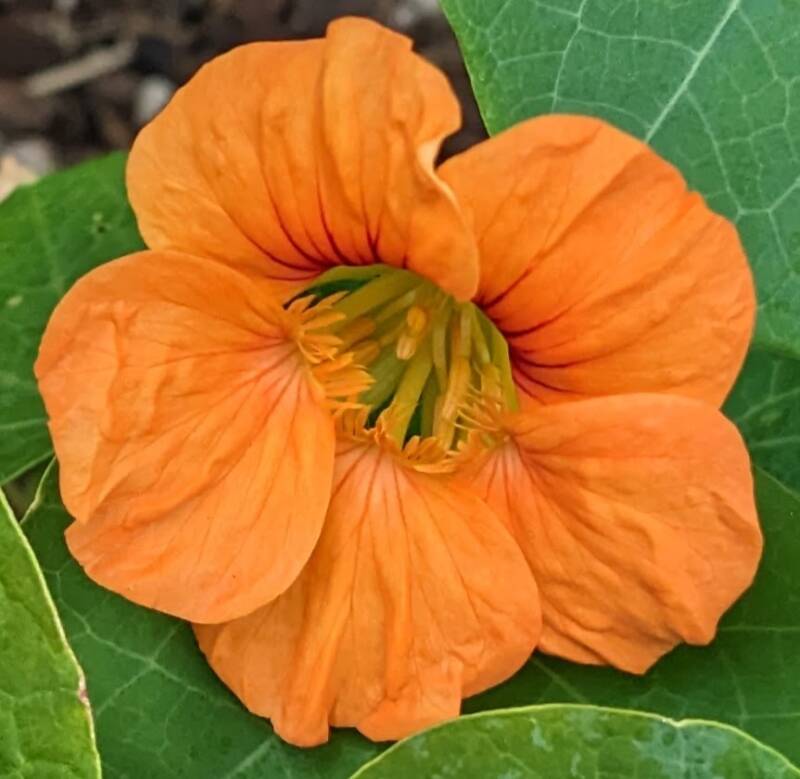Tropaeolum majus is the official name for the nasturtium flower which got its name common name because of its similarity to watercress (Nasturtium officinale). Hailing from Central and South America it made its way to Europe in the 1500s.
The first known writing on Nasturtium was in the 1569 book Historia medicinal de las cosas que se traen de nuestras Indias Occidentales by Spain’s Nicolas Monardes. British herbalist, John Gerard wrote of having received Nasturtium seeds via Europe in the book Herball, or Generall Historie of Plantes. Tropaeolum majus was published in 1597.
Nasturtium is a great addition to many gardens, but for more practical organic gardeners these flowers are often used to attract bees and other pollinators to vegetable gardens and some even use nasturtium as a natural decoy plant for aphids. It’s a prolific bloomer with a tropical vibe.
Other Interesting or Semi-Interesting Things About This Plant
It’s a good source of Vitamin C and iron.
Ground nasturtium seed has been used by some as a substitute for pepper. There are a couple of things on the internet about it being a pepper substitute in WW2, there’s not a lot of information to confirm this story.
According to Tolkien, a similar plant was cultivated by Hobbits.
Specifications & Growing Information
Nasturtiums are an easy flower to grow as they tend to thrive best in poor soil and are okay with some neglect. Some say it’s best to soak these seeds in water for 24 hours before planting for faster germination, but it’s not always necessary if you keep the soil moist and have patience.
- Latin: Tropaeolum
- Annual
- Sun but tolerates shade
- Grows up to 12 inches
- Stratification: Optional-Soaking seeds for 24 hours
- Germination in 10-16 days at 70F
- Sow in Spring/Summer/Fall
- Bloom time is Summer-Frost
- Nasturtiums like poor soil and hate fertilizer.
For direct sow-Plant in a weed-free garden bed after daytime ground temperatures have warmed to at least 65F. Cover seeds with around 1/2 inch of soil. For faster germination, you can soak seeds in water for no more than 7 hours. If you aren’t in a hurry and make sure the soil is kept moist you can skip the soaking.
- Don’t fertilize. Nasturtium does best in poor soil.
- Deadheading makes the plant tidy, but won’t produce more blooms.
- Nasturtium doesn’t transplant well. If starting indoors use peat pots.
- Works well in containers.
Images: © 98201 Seed All rights reserved
